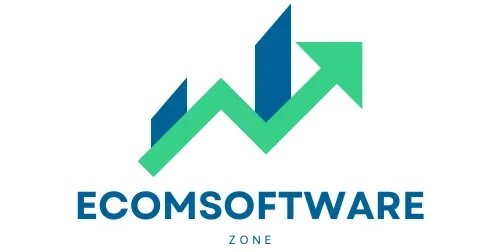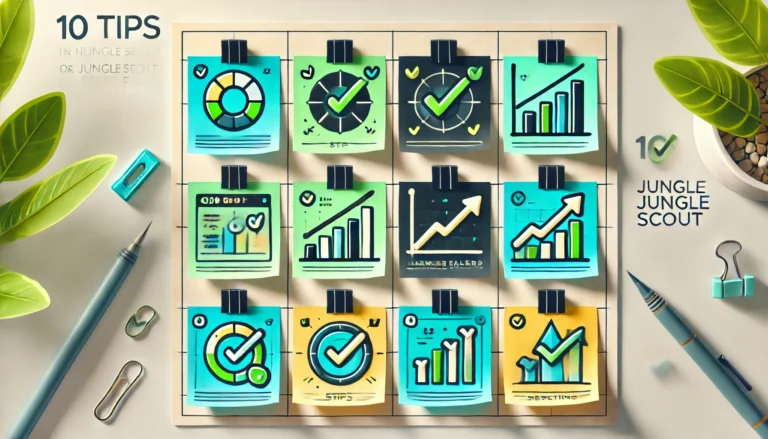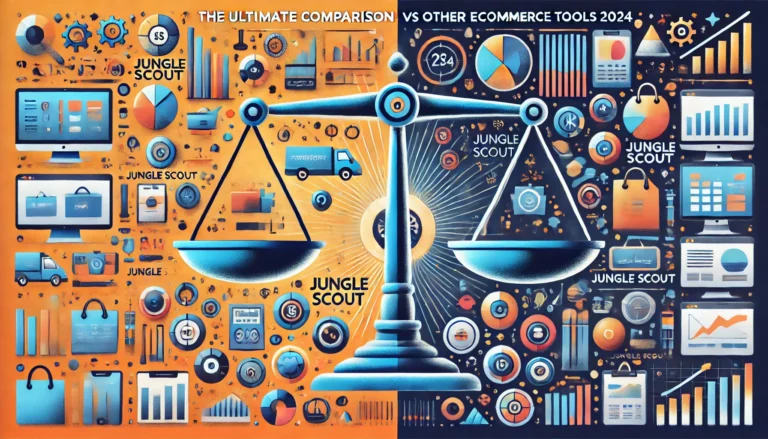Advanced Techniques for Using Jungle Scout Like a Pro
Uncover the secrets of utilising Jungle Scout like a seasoned pro with advanced techniques that elevate your product research game.
Dive into a world where reliable product research, profitable product ideas, and strategic insights reign supreme, revolutionising how you navigate the realm of e-commerce.
Discover how to unlock the full potential of Jungle Scout, streamlining your workflow and maximising profitability.
Explore innovative strategies that demystify the complexities of product sourcing, competition analysis, and market trends.
Enhance your skills, embrace new possibilities, and propel your Amazon FBA business to unprecedented heights with these expert tips.
Revolutionise your approach to product research and take your e-commerce ventures to the next level with advanced Jungle Scout techniques.
Key Takeaways
- Mastering advanced product research tools is crucial for making informed decisions when using Jungle Scout.
- Assessing product demand and viability helps in selecting profitable products to sell on e-commerce platforms.
- Evaluating competition and market gaps can provide opportunities for differentiation and competitive advantage.
- Leveraging customer feedback for improvement is essential for enhancing product quality and customer satisfaction.
- Using keyword tools for enhanced research can boost visibility and sales by targeting relevant search terms.
- Maximising profitability and marketability requires a strategic approach that combines data-driven insights with innovative differentiation strategies.
Understanding Product Research Basics
Identifying Target Demographics
Effective product research in ecommerce involves understanding the needs and preferences of the target audience. By identifying target demographics, sellers can tailor their products to meet specific customer demands. For instance, if the target demographic is young adults interested in sustainable products, sellers can focus on eco-friendly options.
Data analysis plays a crucial role in determining the preferences of different demographic groups. Sellers can use tools like Jungle Scout to analyse trends and gather insights into consumer behaviour. This information helps in creating products that resonate with the target audience, leading to higher sales and customer satisfaction.
Importance of Data Analysis
Data analysis is essential for making informed decisions when it comes to product research. By analysing market trends, competitor performance, and customer feedback, sellers can identify gaps in the market and opportunities for innovation.
For example, by analysing sales data, sellers can determine which products are performing well and adjust their strategies accordingly.
Moreover, data analysis enables sellers to track the success of their products over time. By monitoring key metrics such as sales volume, conversion rates, and customer reviews, sellers can evaluate the performance of their products and make data-driven decisions to improve profitability.
- Bullet List:
- Tailoring products to meet specific customer demands
- Using tools like Jungle Scout for data analysis
- Creating products that resonate with the target audience
- Identifying gaps in the market through data analysis
- Monitoring key metrics for evaluating product performance
Leveraging Product Research Process
Proper product research involves a systematic approach to finding reliable product ideas. Sellers can utilise tools like Jungle Scout to explore various product categories, analyse competition, and assess demand. By following a structured product research process, sellers can uncover profitable opportunities and avoid investing in products with limited market potential.
For instance, when researching private label products, sellers need to consider factors such as time to market and price competitiveness. Through thorough research and analysis, sellers can identify niche markets with high growth potential and develop unique products that stand out from competitors.
Mastering Advanced Product Research Tools
Utilising Filters and Settings
Jungle Scout, a professional product research tool, offers a plethora of features to streamline the process of finding lucrative products. By utilising product search and seller research, users can delve deep into market trends and competitor analysis. The tool’s ability to provide good product ideas based on product reviews is invaluable for those seeking to boost their sales.
One key aspect that sets Jungle Scout apart is its capability to refine searches through philtres and settings. These functions allow users to narrow down results to find particular products within a specific niche or price range. By leveraging these tools effectively, sellers with extensive ecommerce experience can uncover hidden gems that align with their business goals.
Comparing Jungle Scout with Other Tools
When compared to similar tools in the market, Jungle Scout stands out due to its user-friendly interface and comprehensive database. Unlike other platforms, Jungle Scout provides real-time data on seller rank and trends, enabling users to make informed decisions swiftly. This advantage becomes crucial in the fast-paced world of ecommerce, where staying ahead of competitors is paramount.
Moreover, Jungle Scout’s integration with popular ecommerce platforms like Shopify offers seamless navigation for users looking to expand their reach. For online shoppers and sellers alike, the tool’s ability to track performance on major ecommerce websites ensures visibility across diverse markets. This feature is particularly beneficial for businesses aiming to establish a strong presence on various online stores.
Enhancing Product Research Efficiency
By mastering Jungle Scout’s advanced functionalities, users can enhance their product research efficiency significantly. The tool’s ability to analyse best seller ranks across different categories helps sellers identify profitable niches with high demand. This data-driven approach empowers online entrepreneurs to make strategic decisions based on concrete insights rather than guesswork.
Jungle Scout’s comprehensive reports on similar products enable users to differentiate their offerings and stand out in crowded marketplaces. By leveraging these insights, sellers can tailor their strategies to cater to specific customer needs effectively. This level of detailed analysis is essential for businesses looking to optimise their product listings and attract more online traffic.
Assessing Product Demand and Viability
Sales Metrics
Product demand can be assessed through various metrics like sales volume and customer reviews. A high sales volume and positive reviews indicate a successful product that is in high demand.
Customer feedback plays a crucial role in determining the viability of a product. By analysing reviews, sellers can gain insights into the strengths and weaknesses of their products. This data helps them make informed decisions on improving existing products or developing new ones.
Seasonal Trends
Understanding seasonal trends is vital for predicting product sales and ensuring continuous revenue. For example, certain products like sunscreen have higher demand during summer months, while winter sees an increase in sales of cold-weather gear. Sellers must align their inventory and marketing strategies with these trends to maximise profits.
By leveraging seasonal trends, sellers can capitalise on peak demand periods and adjust their inventory accordingly. This proactive approach allows them to meet customer needs effectively and stay ahead of competitors.
Market Testing and Feedback
Validating product ideas through market testing is essential for gauging consumer interest and demand. Conducting surveys, focus groups, or beta testing can provide valuable insights into how a product will perform in the market.
Market feedback helps sellers identify potential issues early on and make necessary adjustments before launching a product. By listening to customer preferences and incorporating their feedback, sellers can ensure they are offering thriving products that meet consumer needs.
- Bullet list
- Sales volume and reviews indicate strong product demand
- Understanding seasonal trends is crucial for predicting product sales
- Market testing and feedback validate product ideas effectively
Analysing Market Trends and Insights
Industry Reports
Industry reports and analytics play a vital role in comprehensive analysis of market trends. By examining these reports, ecommerce entrepreneurs can identify emerging trends early on. For instance, reports on ecommerce marketplaces provide valuable insights into consumer preferences and behaviours.
Leveraging industry reports enables entrepreneurs to stay ahead of the curve by understanding market share dynamics and seasonality trends. This information empowers them to make informed decisions regarding product selection and pricing strategies. For example, a report highlighting the growing popularity of sustainable products can guide entrepreneurs in tapping into this marketplace.
Consumer Behaviour Shifts
Consumer behaviour shifts have a significant impact on product selection within the ecommerce industry. By monitoring and analysing these shifts, entrepreneurs can adapt their offerings to meet evolving consumer needs. For instance, the rise of online shopping during the pandemic led to an increased demand for home fitness equipment.
Understanding consumer behaviour allows entrepreneurs to align their product offerings with current trends. By staying attuned to consumer preferences, they can effectively cater to their target audience and enhance customer satisfaction. For example, an experienced ecommerce blogger may notice a surge in interest for eco-friendly products and adjust their content accordingly.
Social Listening Tools
Utilising social listening tools is essential for gathering real-time insights on emerging market trends. These tools enable entrepreneurs to monitor conversations, reviews, and feedback related to their products or industry. For instance, tracking mentions of a specific product on social media platforms can provide valuable feedback on its performance and reception.
Evaluating Competition and Market Gaps
Competitive Comparison
When conducting competitor analysis, businesses can understand their strengths and weaknesses in comparison to others. By evaluating competitors’ strategies, pricing, and customer base, companies can identify areas for improvement.
Low Competition Products
Identifying low competition products is crucial for entering underserved markets. By finding niches with minimal competition but high demand, businesses can capitalise on opportunities that others might overlook.
Opportunity Finder
Developing an opportunity finder mindset involves seeking out gaps in the market where products are scarce but needed. This approach allows businesses to innovate and offer solutions that meet unmet consumer needs.
Effective Positioning
To stand out against competitors, it’s essential to position products effectively. This involves highlighting unique selling points, creating compelling marketing messages, and showcasing the value proposition to customers.
Exploring Innovative Differentiation Strategies
Promising Niches
Promising product niches are essential for success. Identifying niche markets allows brands to focus their efforts strategically. By tapping into specific niches, businesses can connect with a more targeted audience.
When exploring promising niches, it’s crucial to conduct thorough research. Look for areas where many brands have not yet ventured. By finding an untapped niche, you can position your products uniquely in the market.
Creative Marketing Tactics
In the realm of online marketing strategies, creativity is key. Engaging with customers through innovative campaigns can set your brand apart. Utilise social media platforms effectively to reach a wider audience and build brand awareness.
Implementing unique marketing strategies can help your brand stand out. Consider collaborations with influencers or hosting interactive online events. These tactics can create buzz around your products and attract new customers.
Customer-Centric Approach
Putting customers at the forefront is a winning strategy. Providing exceptional customer service can differentiate your brand from competitors. Respond promptly to queries, address concerns effectively, and go the extra mile to ensure customer satisfaction.
Branding plays a significant role in attracting and retaining customers. Develop a strong brand identity that resonates with your target audience. Consistent branding across all touchpoints helps build trust and loyalty among consumers.
Product Innovation Based on Feedback
Listening to customer feedback is invaluable for product development. Use feedback to improve existing products or create new ones that meet consumer needs. Continuous innovation based on customer insights can keep your brand ahead of the competition.
When developing new products, focus on unique selling propositions (USPs). Highlight what makes your products different from others in the market. Whether it’s superior quality, innovative features, or eco-friendly materials, emphasise these USPs in your marketing efforts.
Leveraging Customer Feedback for Improvement
Customer Reviews
Customer reviews are valuable sources of information that can provide insights into areas for product enhancement. By collecting and analysing these reviews, businesses can identify common themes such as negative comments, suggestions, and areas of improvement.
Surveys and polls offer a more structured approach to gathering feedback. They allow businesses to ask specific questions about customer preferences and experiences, providing quantitative data that can guide decision-making processes.
Implementing Feedback Loops
Implementing feedback loops is crucial for continuously improving product offerings. By creating a system where customer feedback is regularly collected and acted upon, businesses can ensure that they are meeting customer needs and staying ahead of the competition.
Feedback loops can take various forms, such as online surveys, email questionnaires, or even direct communication channels with customers. This continuous feedback mechanism helps in addressing problems promptly and making necessary adjustments.
Surveys and Polls
Using surveys and polls is an effective way to gain deeper insights into customer preferences. These tools allow businesses to ask targeted questions about specific aspects of their products or services, helping them understand what customers value most.
Using Keyword Tools for Enhanced Research
Identifying Relevant Keywords
Keyword tools are essential for enhanced research when using Jungle Scout. By identifying relevant keywords, sellers can drive traffic to their products effectively.
Sellers can utilise tools like Google Keyword Planner to discover popular keywords that potential customers use to search for similar products. This insight helps in optimising product listings for better search visibility.
Monitoring Keyword Performance
Monitoring keyword performance is crucial for adjusting marketing strategies accordingly. By tracking how well certain keywords perform, sellers can make informed decisions on which terms to focus on.
- Utilise keyword tools like Jungle Scout to track search volume and click-through rates for different keywords.
- Regularly update and refine keyword criteria based on the performance data gathered.
Maximising Profitability and Marketability
Calculating Total Costs
Ecommerce sellers need to meticulously calculate total costs, encompassing sourcing, shipping, and marketing expenses, to establish competitive pricing strategies. By understanding the cost breakdown, sellers can set profitable product prices that ensure a healthy profit margin.
To illustrate, consider a scenario where an ecommerce seller sources a product for £10, incurs £3 in shipping costs, and allocates £2 for marketing. By adding these expenses (£10 + £3 + £2 = £15), the seller can determine an optimal selling price that covers all costs while generating a desirable profit.
Implementing Bundling and Upselling
One effective strategy to boost profitability is through bundling or upselling techniques, which aim to increase the average order value. By offering complementary products as bundles or enticing customers with upgrades during checkout, ecommerce sellers can enhance their revenue streams.
For instance, a seller offering a skincare set at a discounted price compared to individual items can encourage customers to purchase more items, elevating the overall order value. This technique not only drives sales but also enhances customer satisfaction by providing value-added options.
Evaluating Promotional Campaigns
Successful sellers understand the importance of assessing the effectiveness of promotional campaigns in driving both sales and brand awareness. By analysing key metrics such as conversion rates, click-through rates, and return on investment (ROI), sellers can refine their marketing strategies for optimal results.
For example, an ecommerce store running a social media ad campaign can track metrics like engagement levels and website traffic generated from the ads. By monitoring these indicators closely, sellers can adjust their campaigns in real-time to maximise impact and reach their target audience effectively.
Conclusion
In wrapping up the discussed sections on advanced techniques for using Jungle Scout effectively, it is evident that a strategic approach to product research and market analysis is paramount for success in the competitive e-commerce landscape. By mastering advanced tools, assessing demand, analysing trends, evaluating competition, and leveraging customer feedback, one can make informed decisions to maximise profitability and marketability. These steps, coupled with innovative differentiation strategies and keyword research, form a robust foundation for achieving sustainable growth and staying ahead in the ever-evolving market.
To excel in utilising Jungle Scout like a pro, continuous learning, adaptation to market dynamics, and a commitment to refining strategies based on data-driven insights are crucial. Embracing these principles will not only enhance product discovery and sales but also position individuals as industry leaders. Stay proactive, stay informed, and keep refining your approach to unlock the full potential of Jungle Scout in your e-commerce journey.
Frequently Asked Questions
What are the key components of using Jungle Scout effectively?
Jungle Scout effectiveness lies in mastering product research basics, utilising advanced tools, assessing demand and viability, analysing trends, evaluating competition, differentiating strategies, leveraging feedback, using keyword tools, and maximising profitability. Setting up Jungle Scout properly is crucial to unlocking its full potential and ensuring you are equipped with the right data for making informed decisions. By customising your preferences, notifications, and dashboards, you’ll be able to streamline the research process and keep track of critical insights in real-time.
How can one utilise customer feedback for product improvement?
Customer feedback is crucial for product enhancement. Analyse reviews for common themes, address negative feedback constructively, implement suggested improvements, and engage with customers to build loyalty and trust.
Why is it important to assess market trends and insights when using Jungle Scout?
Assessing market trends provides valuable data on consumer preferences, emerging niches, and evolving demands. This insight helps in making informed decisions on product selection, pricing strategies, and overall business direction.
How can one effectively maximise profitability and marketability using Jungle Scout?
To maximise profitability and marketability, focus on identifying high-demand products with manageable competition, optimise pricing based on market trends, enhance product differentiation, leverage customer feedback for improvements, and continuously monitor and adjust strategies.
Why should one explore innovative differentiation strategies while using Jungle Scout?
Exploring innovative differentiation strategies sets your products apart from competitors. By offering unique features, packaging, or branding elements, you can attract a loyal customer base and command premium pricing in the market.







